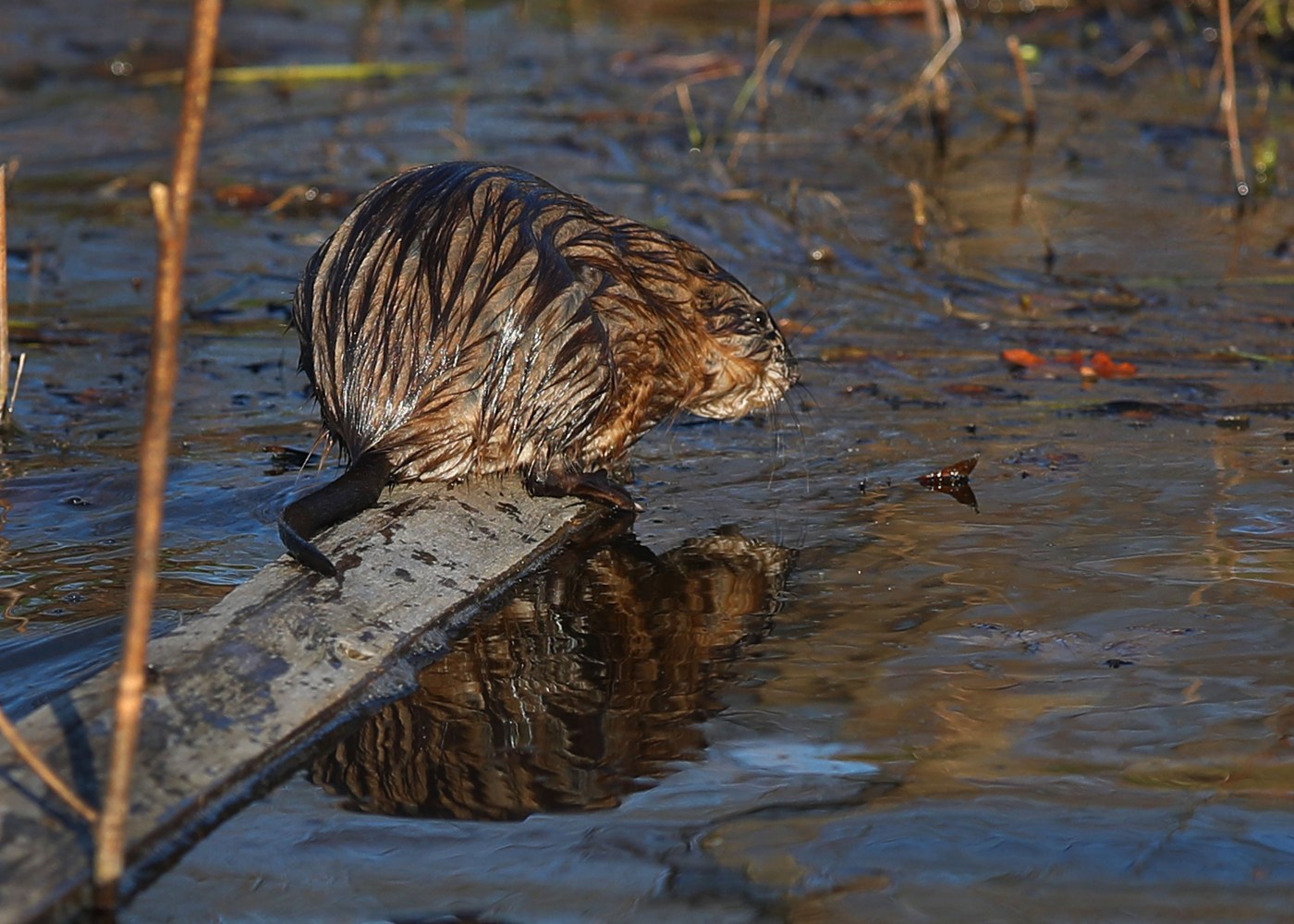Top Stories
Muskrats Combat Invasive Cattails, Boost Biodiversity in Great Lakes

URGENT UPDATE: New research from Loyola University Chicago reveals that muskrats are playing a vital role in fighting invasive cattails across the Great Lakes, significantly enhancing biodiversity. These semi-aquatic rodents are not just cute additions to wetland ecosystems; they are becoming essential allies for ecologists looking to restore degraded habitats.
In a groundbreaking study, researchers led by ecologist Shane Lishawa found that muskrats can reduce invasive narrowleaf cattails, or Typha angustifolia, by a staggering 71% in areas they inhabit. This reduction opens up wetlands for diverse native plants and wildlife, crucial for maintaining ecological balance.
“Cattails outcompete native plants, disrupting habitats for fish, birds, and amphibians,” Lishawa stated. “Muskrats provide a natural solution by cutting these invasive plants, allowing healthier ecosystems to thrive.” The study highlights the urgent need for conservation methods that mimic muskrat behavior, especially in regions where their populations have declined.
Historically, Typha angustifolia was introduced to North America in the 19th century and quickly became an aggressive invader. This has led to significant degradation of native wetland areas, with over 90% of Illinois’ original marshlands destroyed by urban development and agriculture. The recent 2023 Supreme Court ruling in Sackett v. EPA further complicates conservation efforts by stripping protections from many inland wetlands, leaving them vulnerable to development.
The research was conducted in the marsh connecting the Munuscong River with the St. Marys River, situated between Lakes Superior and Huron. Observations revealed that muskrats not only cut cattails but also enhance biodiversity by creating “patchworks” of openings for a variety of native plants to flourish.
Lishawa’s findings have resonated with the Sault Ste. Marie Tribe of Chippewa Indians, who recognize the cultural significance of muskrats in their creation stories. “Wazhashk, the common muskrat, has a profound role in our heritage, underscoring its importance in our ecosystems,” said a tribal representative.
Given that muskrats are not present in all wetlands, researchers are exploring human management strategies that replicate their impact. In test sites, mowing invasive plants below the waterline yielded promising results comparable to muskrat activity. “This approach could be revolutionary for wetland restoration,” Lishawa noted.
The study aims to shift perceptions about invasive species and emphasizes the importance of preserving natural biodiversity. As invasive cattails and other non-native plants continue to threaten ecosystems across North America, understanding and leveraging the role of muskrats can provide a pathway to healthier wetlands.
As the Great Lakes region faces ongoing environmental challenges, including pollution and habitat loss, the urgency for effective restoration strategies has never been greater. The work of Lishawa and his team, dubbed “Team Typha,” seeks to inspire further research and action in wetland conservation.
Conservationists and researchers are now calling for immediate action to protect and support muskrat populations, which could ultimately lead to more resilient and diverse ecosystems. The potential for collaboration between wildlife management and ecological restoration remains vast, with muskrats at the forefront of this essential mission.
Stay tuned for more updates on this developing story as efforts to restore the Great Lakes wetlands continue to gain momentum.
-

 Science3 weeks ago
Science3 weeks agoInventor Achieves Breakthrough with 2 Billion FPS Laser Video
-

 Health3 weeks ago
Health3 weeks agoCommunity Unites for 7th Annual Into the Light Walk for Mental Health
-

 Top Stories3 weeks ago
Top Stories3 weeks agoCharlie Sheen’s New Romance: ‘Glowing’ with Younger Partner
-

 Entertainment3 weeks ago
Entertainment3 weeks agoDua Lipa Aces GCSE Spanish, Sparks Super Bowl Buzz with Fans
-

 Business3 weeks ago
Business3 weeks agoTyler Technologies Set to Reveal Q3 Earnings on October 22
-

 Health3 weeks ago
Health3 weeks agoCurium Group, PeptiDream, and PDRadiopharma Launch Key Cancer Trial
-

 World3 weeks ago
World3 weeks agoR&B Icon D’Angelo Dies at 51, Leaving Lasting Legacy
-

 Entertainment3 weeks ago
Entertainment3 weeks agoMother Fights to Reunite with Children After Kidnapping in New Drama
-

 Health3 weeks ago
Health3 weeks agoNorth Carolina’s Biotech Boom: Billions in New Investments
-

 Entertainment3 weeks ago
Entertainment3 weeks agoRed Sox’s Bregman to Become Free Agent; Tigers Commit to Skubal
-

 Science3 weeks ago
Science3 weeks agoNorth Carolina’s Biotech Boom: Billions Invested in Manufacturing
-

 Top Stories3 weeks ago
Top Stories3 weeks agoFormer Mozilla CMO Launches AI-Driven Cannabis Cocktail Brand Fast









